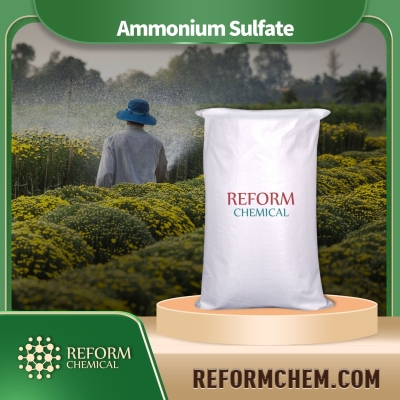-
Categories
-
Pharmaceutical Intermediates
-
Active Pharmaceutical Ingredients
-
Food Additives
- Industrial Coatings
- Agrochemicals
- Dyes and Pigments
- Surfactant
- Flavors and Fragrances
- Chemical Reagents
- Catalyst and Auxiliary
- Natural Products
- Inorganic Chemistry
-
Organic Chemistry
-
Biochemical Engineering
- Analytical Chemistry
-
Cosmetic Ingredient
- Water Treatment Chemical
-
Pharmaceutical Intermediates
Promotion
ECHEMI Mall
Wholesale
Weekly Price
Exhibition
News
-
Trade Service
In 2017, the No.
1 document of the central government once again proposed the in-depth promotion of zero growth of chemical fertilizers and pesticides.
The new "Pesticide Management Regulations" (revised draft) will guarantee agricultural production safety, agricultural product quality safety, and ecological environment safety, and fundamentally solve the problem of agricultural ecological environment and Food safety issues provide legal protection for the healthy and sustainable development of the pesticide industry, and superimpose the normalization of environmental protection.
The industry agrees that it will have a profound impact on the pesticide industry, especially this year's pesticide spring ploughing market is tight and stable.
Demand to be released is the main feature
.
Recently, the National Agricultural Technology Extension Service Center released the "2017 National Crop Disease and Pest Occurrence Trend Forecast", which predicts that China's major crop plant diseases and insect pests will generally occur in 2017
.
Among them, epidemic and migratory pests such as wheat head blight and rice "two-migration" pests have a high risk of recurrence.
Rice borer and rice sheath blight occur in a wide area and cause serious damage, and rice blast occurs more severely in some areas
.
According to the analysis of industry insiders, based on the goal of zero growth in pesticide use by 2020, China will focus on strengthening the promotion and application of specialized unified prevention and control, green prevention and control, and pesticide reduction and control technologies.
In addition, it is expected that there will be no large-scale outbreaks of pests and diseases.
The total demand for pesticides in China will not change much in 2017
.
According to the preliminary forecast statistical analysis of 31 provincial-level plant protection systems across the country, the total national pesticide demand (commodity volume) in 2017 is expected to be 920,000 tons, which is nearly 300,000 tons, a decrease of about 2% over the previous year
.
The varieties that demand more than 10,000 tons are (in descending order): glyphosate, dichlorvos, acetochlor, copper sulfate, carbendazim, and atrazine
.
According to data from the National Statistics Department, in 2016, China’s pesticide production was 3.
778 million tons, the domestic demand was about 1.
7 million tons, and the net export volume was 1.
3334 million tons.
It can be seen that China’s pesticides can not only meet the needs of exports, but also supply domestic pesticides.
It is also relatively sufficient, so the overall supply of pesticides in China can meet the demand for spring farming
.
From the perspective of supply, according to the data of the national statistics department, my country’s pesticide production in 2016 was 3.
778 million tons, the domestic demand was about 1.
7 million tons, and the net export volume was 1.
3334 million tons.
.
It can be seen that China's pesticides can not only meet the needs of exports, but also have a sufficient supply of domestic pesticides.
The overall supply of pesticides in China can meet the demand for spring farming
.
Agricultural product prices, farmers' enthusiasm for growing grain, pesticide inventory, raw material prices, environmental protection and other factors have different effects on the demand for pesticides.
During the peak season of spring plowing, the demand for the four major pesticides has increased and decreased
.
In recent years, the demand for pesticides in China's spring plowing season has been poor.
Recently, the agricultural technology department predicts that the pressure on plant protection from pests will be relatively reduced this year, resulting in a decline in the overall demand for pesticides in spring plowing.
The quantity has risen significantly, and China’s labor shortage and herbicides start earlier than other pesticides.
The demand for herbicides during spring plowing is relatively strong.
Due to the adjustment of planting structure and the frequent occurrence of crop diseases, the demand for fungicides in spring plowing season is also relatively strong
.
1 document of the central government once again proposed the in-depth promotion of zero growth of chemical fertilizers and pesticides.
The new "Pesticide Management Regulations" (revised draft) will guarantee agricultural production safety, agricultural product quality safety, and ecological environment safety, and fundamentally solve the problem of agricultural ecological environment and Food safety issues provide legal protection for the healthy and sustainable development of the pesticide industry, and superimpose the normalization of environmental protection.
The industry agrees that it will have a profound impact on the pesticide industry, especially this year's pesticide spring ploughing market is tight and stable.
Demand to be released is the main feature
.
Recently, the National Agricultural Technology Extension Service Center released the "2017 National Crop Disease and Pest Occurrence Trend Forecast", which predicts that China's major crop plant diseases and insect pests will generally occur in 2017
.
Among them, epidemic and migratory pests such as wheat head blight and rice "two-migration" pests have a high risk of recurrence.
Rice borer and rice sheath blight occur in a wide area and cause serious damage, and rice blast occurs more severely in some areas
.
According to the analysis of industry insiders, based on the goal of zero growth in pesticide use by 2020, China will focus on strengthening the promotion and application of specialized unified prevention and control, green prevention and control, and pesticide reduction and control technologies.
In addition, it is expected that there will be no large-scale outbreaks of pests and diseases.
The total demand for pesticides in China will not change much in 2017
.
According to the preliminary forecast statistical analysis of 31 provincial-level plant protection systems across the country, the total national pesticide demand (commodity volume) in 2017 is expected to be 920,000 tons, which is nearly 300,000 tons, a decrease of about 2% over the previous year
.
The varieties that demand more than 10,000 tons are (in descending order): glyphosate, dichlorvos, acetochlor, copper sulfate, carbendazim, and atrazine
.
According to data from the National Statistics Department, in 2016, China’s pesticide production was 3.
778 million tons, the domestic demand was about 1.
7 million tons, and the net export volume was 1.
3334 million tons.
It can be seen that China’s pesticides can not only meet the needs of exports, but also supply domestic pesticides.
It is also relatively sufficient, so the overall supply of pesticides in China can meet the demand for spring farming
.
From the perspective of supply, according to the data of the national statistics department, my country’s pesticide production in 2016 was 3.
778 million tons, the domestic demand was about 1.
7 million tons, and the net export volume was 1.
3334 million tons.
.
It can be seen that China's pesticides can not only meet the needs of exports, but also have a sufficient supply of domestic pesticides.
The overall supply of pesticides in China can meet the demand for spring farming
.
Agricultural product prices, farmers' enthusiasm for growing grain, pesticide inventory, raw material prices, environmental protection and other factors have different effects on the demand for pesticides.
During the peak season of spring plowing, the demand for the four major pesticides has increased and decreased
.
In recent years, the demand for pesticides in China's spring plowing season has been poor.
Recently, the agricultural technology department predicts that the pressure on plant protection from pests will be relatively reduced this year, resulting in a decline in the overall demand for pesticides in spring plowing.
The quantity has risen significantly, and China’s labor shortage and herbicides start earlier than other pesticides.
The demand for herbicides during spring plowing is relatively strong.
Due to the adjustment of planting structure and the frequent occurrence of crop diseases, the demand for fungicides in spring plowing season is also relatively strong
.






